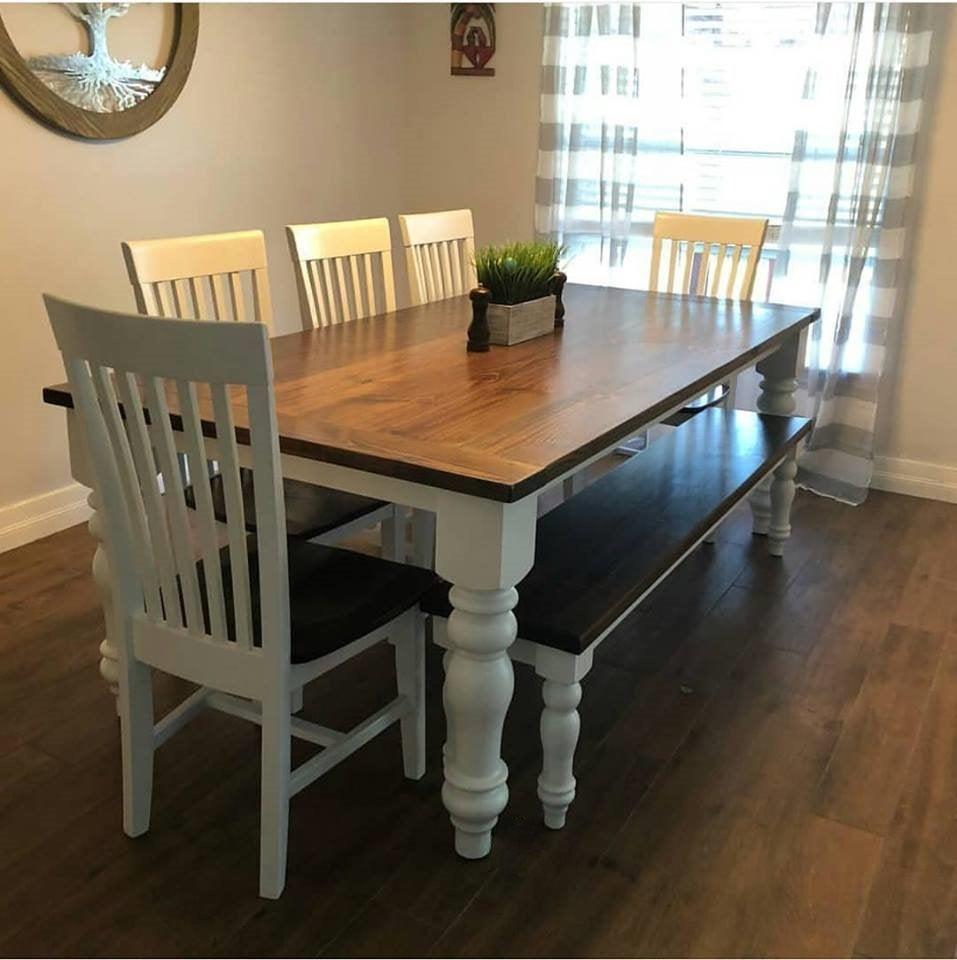Discovering Different Layouts for Dining Room Table Legs to Suit Your Visual
Discovering Different Layouts for Dining Room Table Legs to Suit Your Visual
Blog Article
A Comprehensive Check Out Table Leg Styles: Discovering the Ideal Suit
Picking the ideal dining table leg design is vital for both aesthetic appeal and sensible performance. Conventional 4 legs use timeless style and security, while the pedestal base offers increased legroom and a contemporary appearance. For those with larger tables, trestle legs make sure strong assistance, whereas barrette legs present a mid-century modern-day vibe with their minimal style. The x-shaped legs blend modern design with improved stability. Each of these choices brings distinct advantages, making the choice extra than just an issue of preference. Discover even more to uncover which style flawlessly complements your eating room and way of life.
Traditional Four Legs
Amongst the numerous kinds of eating table leg styles, the typical four-leg layout remains a timeless option for several households. Four legs supply balanced assistance, making certain the table continues to be steady and capable of bearing substantial weight (dining room table legs).
From a visual point of view, the conventional four-leg design can be conveniently adjusted to different interior designs. Whether crafted from wood, metal, or a mix of materials, these legs can be intricately sculpted, smooth and minimalistic, or anything in between. Their flexibility allows them to enhance both rustic and contemporary setups effortlessly.
Furthermore, the straightforward framework of the four-leg style helps with ease of activity and placement within a room. Unlike even more complex bases, this design reduces blockages, offering ample legroom for restaurants. In summary, the standard four-leg table leg design marries sustaining beauty with sensible performance, making it a sharp choice for those looking for both form and feature in their dining furniture.
Stand Base
Typically commemorated for its elegant and space-efficient design, the pedestal base is a prominent alternative to the typical four-leg arrangement in dining table leg styles. Without corner legs, diners are afforded higher flexibility of activity, making it an ideal choice for round and oval tables that promote more intimate and inclusive events.
The central column itself offers a canvas for detailed styles and artistic expressions, including an aspect of visual passion below the table. In recap, the pedestal base combines performance with style, making it an improved and useful alternative for varied eating atmospheres.
Trestle Legs
Trestle legs provide a durable and timeless structure for dining tables, identified by their horizontal cross-bracing and strong support light beams. Originating from middle ages times, this design has actually evolved yet maintained its important framework, making it a perennial favorite in both typical and contemporary setups. The central trestle light beam, often sustained by 2 or even more upright articles, supplies phenomenal stability, enabling larger table sizes without the demand for additional legs.
A substantial advantage of trestle leg tables is the sufficient legroom they supply. Unlike tables with four corner legs, the lack of blockages at the table's edges supplies unblocked space for chairs and diners, improving convenience and ease of access. This makes trestle tables suitable for accommodating larger events, whether in an eating room or a banquet hall.
The visual convenience of trestle legs is noteworthy. Offered in a range of products such as timber, steel, and composite, they can be finished to complement a wide variety of indoor designs. From rustic farmhouse to streamlined modern designs, trestle legs can be customized to suit private tastes. Their enduring charm and practical advantages make trestle legs an engaging selection for those looking for both design and usefulness in their eating table.
Hairpin Legs

The charm of barrette legs hinges on their simplicity and adaptability - dining room table legs. Available in a variety of products, consisting of steel and brass, they can be finished in countless colors to match various indoor designs. Whether paired with a rustic wooden table top or a contemporary glass surface, hairpin legs effortlessly mix performance with a touch of vintage appeal
Durability is one more significant attribute of barrette legs. Despite their delicate appearance, these legs are engineered to bear considerable weight, making sure the table continues to be stable and protected. Furthermore, they are fairly easy to set up, making them a prominent option for DIY lovers and expert furniture makers alike.
X-Shaped Legs

Constructed from materials such as steel, timber, or a combination of both, X-shaped legs can be tailored to match numerous layout preferences. Steel legs usually lend a smooth and commercial feel, look at this website ideal for loft-style apartment or condos and modern dining areas. On the various other hand, wood X-shaped legs provide a warmer, a lot more rustic allure, suitable for farmhouse or eclectic interiors. The convenience in materials allows house owners to tailor their eating tables to better fit their overall style plan.
In addition, the design behind X-shaped legs makes certain even weight distribution, decreasing the danger of tottering and boosting sturdiness. This makes them specifically well-suited for bigger eating tables that require added assistance. Basically, X-shaped legs mix practical engineering with modern-day looks, making them an ageless choice for diverse eating atmospheres.
Final Thought
A comprehensive understanding of eating table leg styles reveals the distinctive features and advantages of each design. Typical 4 legs use stability and ageless allure, while pedestal bases give legroom and a structured look. Trestle legs guarantee durable assistance for larger tables, and barrette legs introduce a mid-century modern-day aesthetic. X-shaped Check This Out legs incorporate contemporary design with enhanced stability. Selecting the ideal leg design guarantees both useful and aesthetic satisfaction in any eating room.
Report this page